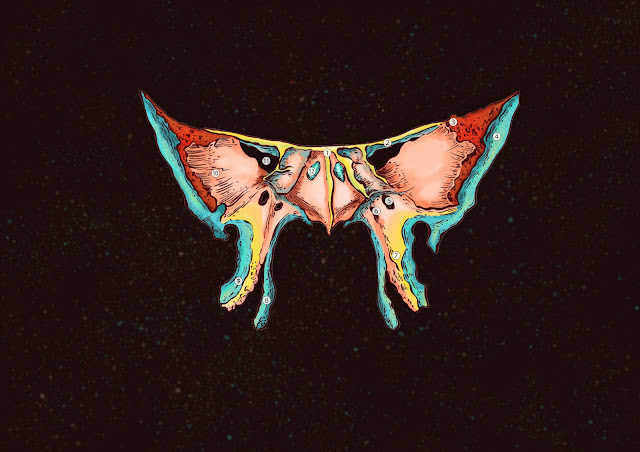Siping Zheng - Sphenoid bone: the most beautiful and romantic skeleton in the human body
Nombre y apellidos: Siping Zheng
País: China
Web: https://www.instagram.com/siyi.zh_art?igsh=Mjl6ODltZjRjdWly&utm_source=qr
Redes sociales: https://www.instagram.com/siyi.zh_art?igsh=Mjl6ODltZjRjdWly&utm_source=qr
Título de la obra: Sphenoid bone: the most beautiful and romantic skeleton in the human body
Especie o elemento: Sphenoid bone(skull bone)
Categoría: Año Cajal
Técnicas utilizadas: digital painting(photoshop)
Inteligencia artificial: No. no
Tamaño: 21 x 29.7cm
Año de creación: 2024
Descripción: Sphenoid Bone
(anterior aspect)
1、body of sphenoid
2、lesser wing
3、greater wing
4、temporal surface
5、foramen rotundum
6、pterygoid canal
7、pterygoid process
8、medial pterygoid plate
9、lateral pterygoid plate
10、orbital surface
11、superior orbital fissure
12、aperture of sphenoidal sinus
Hueso esfenoides
(aspecto anterior)
1、cuerpo del esfenoide
2、ala menor
3、ala mayor
4、superficie temporal
5、agujeros redondos
6、tubos del canal frigoideo
7、apofisis pterigoidea
8、placa frigoides medial
9、placa frigoides lateral
10、superficie orbital
11、fisura orbitaria suoerior
12、aperture of sphenoidal sinus
The sphenoid bone is the most beautiful and romantic skeleton in the human body, resembling a butterfly, which is also the origin of its name. The sphenoid bone is located in the center of the skull base, and is firmly connected with other skulls such as frontal bone, temporal bone, ethmoid bone, occipital bone and other skull bones with the help of sutures or cartilage to form a cranial cavity. The sphenoid bone is divided into four parts: body, large wing, small wing, and pterygoid process. Its complex structure supports the intracranial tissues, and nerves, arteries, and veins also flow throughout the body through it.
El hueso esfenoidal es el esqueleto más bello y romántico del cuerpo humano, parecido a una mariposa, que también es el origen de su nombre. El hueso esfenoidal se encuentra en el centro de la base del cráneo y está firmemente conectado con otros cráneos como el hueso frontal, el hueso temporal, el hueso etmoidal, el hueso occipital y otros huesos del cráneo con la ayuda de suturas o cartílago para formar una cavidad craneal, que se divide en cuatro partes: cuerpo, ala grande, ala pequeña y apófisis pterigoidea. Su compleja estructura soporta los tejidos intracraneales, y los nervios, arterias y venas también fluyen por todo el cuerpo a través de él.

